Yellowing Bamboo Leaves: Help For Yellow Bamboo Leaves


There are over one thousand species of bamboo. Some are majestic giants soaring to over 100 feet (31 m.) in the air. Others are shrub-like, growing only 3 feet (1 m.) tall. Bamboo plants belong to the grass family. They are more closely related to turf grass than they are to a tree. Most bamboos hail from the tropics, but there are also many temperate bamboos. A few can even survive freezing mountain temperatures. While these plants are generally hardy, when bamboo leaves are yellow, this could signal an issue. Read on to learn more.
Yellowing Bamboo Leaves
Bamboo is a popular ornamental and edible plant. Many homeowners and gardeners plant bamboo because it can screen out unwanted views or create a private space. Bamboo is fast growing and spreads quickly. Like all ornamental plants, bamboo has certain requirements to stay healthy. True bamboo has hollow stems and bright green leaves. If your bamboo leaves are yellow, this could be a sign that your plant is failing.
How to Treat Yellow Bamboo Leaves
Bamboo is an evergreen plant. All evergreen plants lose their leaves, but they don’t lose them all at once like their deciduous friends. Some yellowing bamboo leaves and dropping bamboo leaves are normal processes throughout the year. There will be a bit more leaf loss in the spring. So if just a few of your bamboo stems and leaves are turning yellow, this is probably normal attrition. If large parts or all of your bamboo is turning yellow, however, then you most likely have a problem. Problematic yellowing bamboo leaves can be due to low soil nutrients, boggy soil or overwatering, lack of water, or stressful growing situations. If you want help for yellow bamboo leaves, check the soil regularly. Bamboo needs good drainage. If the soil is mucky and boggy, then you are overwatering or the bamboo is planted in the wrong spot. Reduce irrigation. If your soil is really dry, then you need to increase your irrigation run time and/or frequency. Bamboo likes a lot of water and is not a drought tolerant plant. Remember that bamboo plants spread wider and wider each year. You will need to adapt your irrigation set-up as the bamboo grows. Allow the bamboo leaf litter to stay on the ground rather than rake it up. This helps hold moisture in the soil. Bamboo plants like acidic, rich, loamy soil. Bamboo will benefit from regular, yearly applications of organic compost. Organic compost provides a variety of soil nutrients at a modest rate. It also helps hold soil nutrients for your bamboo plants to use and opens up heavy clay soil that doesn’t drain well. Stressful growing situations for your bamboo plants could mean the site is too windy, too hot, too dry, or too polluted. If you have one of these situations, you may need to mitigate it by growing a windbreak, adding more irrigation water, or reducing nearby applications of chemical pesticides, herbicides, or synthetic fertilizers. Growing bamboo is fun and easy. One of the most exciting aspects of growing bamboo is to witness how quickly it grows. If your bamboo stems and leaves are turning yellow, try some of these suggestions to get your bamboo back on track.
Gardening tips, videos, info and more delivered right to your inbox!
Sign up for the Gardening Know How newsletter today and receive a free download of our most popular eBook "How to Grow Delicious Tomatoes."

Karen Boness is the founder of Wild Willow Design, an Australia-based company that specializes in ecological landscape design.
-
 Urban Composting Guide: How To Compost In The Middle Of The City
Urban Composting Guide: How To Compost In The Middle Of The CityUrban composting does not have to be daunting. You can compost in the city, and maybe even try some urban worm composting!
By Mary Ellen Ellis
-
 Shrub Diseases And Pests To Watch Out For
Shrub Diseases And Pests To Watch Out ForShrub diseases and pests can be challenging. Learn how to recognize and eradicate them before they can present a danger to your plants.
By Susan Albert
-
 Bamboo Winter Care – How To Winterize Bamboo Plants
Bamboo Winter Care – How To Winterize Bamboo PlantsWinterizing bamboo is important to facilitate continued growth again in spring. Click here to get some tips for your bamboo during winter.
By Becca Badgett
-
 Desert Bamboo Varieties – Growing Bamboo In The Desert
Desert Bamboo Varieties – Growing Bamboo In The DesertGrowing bamboo in the desert or finding one desert climates starts with the right plant selection. Click here for choices that do well in arid climates.
By Becca Badgett
-
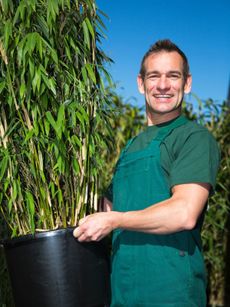 Large Bamboo Division: Learn When To Split Potted Bamboo Plants
Large Bamboo Division: Learn When To Split Potted Bamboo PlantsBamboo plants are wonderful plants to grow in pots. Many varieties are invasive when planted in the ground, so growing them in pots is a great solution, but they will grow pretty quickly and can be a challenge to repot. This article can help with that.
By Raffaele Di Lallo
-
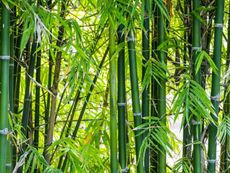 Bamboo Mite Information – Learn How To Kill Bamboo Spider Mites
Bamboo Mite Information – Learn How To Kill Bamboo Spider MitesWhat are bamboo mites? Native to Japan, bamboo mites are troublesome little pests that feed on bamboo and a few grasses in the bamboo family. Managing bamboo mites isn?t easy, but it?s possible. You can learn more about bamboo mite control in the following article.
By Mary H. Dyer
-
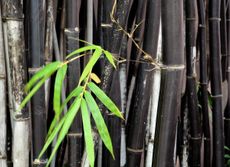 Black Bamboo Information: Tips On Growing Black Bamboo
Black Bamboo Information: Tips On Growing Black BambooWhile bamboo provides the instant gratification of being a fast grower, some varieties of bamboo can become very invasive and grow out of control. Is black bamboo invasive? Click on this article for the answer and learn how to care for black bamboo.
By Shelley Pierce
-
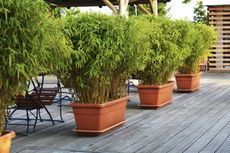 Growing Bamboo In Pots: Can Bamboo Be Grown In Containers
Growing Bamboo In Pots: Can Bamboo Be Grown In ContainersBamboo gets a bad rap. There's one surefire way to prevent their rhizomes from getting all over your yard: growing bamboo in pots. Click this article to learn more about container grown bamboo and caring for bamboo in pots.
By Liz Baessler
-
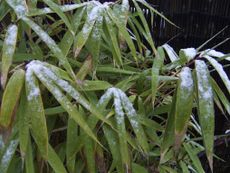 Bamboo With Brown Tips: Reasons Why Bamboo Plant Tips Are Brown
Bamboo With Brown Tips: Reasons Why Bamboo Plant Tips Are BrownMy bamboo is turning brown; is that normal? The answer is - maybe, or maybe not! If you?re noticing your bamboo plant tips are brown, it?s time to do some troubleshooting to determine the cause. This article can help with that.
By Mary H. Dyer
-
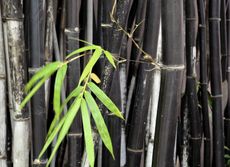 Bamboo Plant Types – What Are Some Common Bamboo Varieties
Bamboo Plant Types – What Are Some Common Bamboo VarietiesIf you plan accordingly and pay attention to what variety you?re planting, bamboo can be a great addition to your garden. Take a look at this article to learn about different varieties of bamboo. Click here for more info.
By Liz Baessler